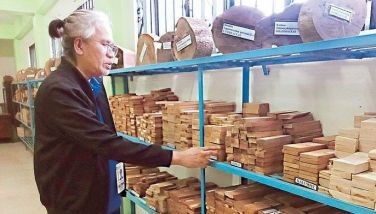APEC leaders commit to counter terrorism, corruption
YOKOHAMA –- Leaders of the Asia-Pacific Economic Cooperation (APEC) summit committed yesterday to continue their collective efforts to combat terrorism, currency manipulation and corruption in the region.
The heads of state also agreed to work for a comprehensive free trade agreement in the region by 2020.
The APEC leaders, however, said the five developed countries Australia, Canada, Japan, New Zealand and the United States, as well as the volunteer developing economies of Chile, Hong Kong, China, Korea, Malaysia, Mexico, Peru, Singapore and Chinese Taipei, all failed to meet the commitment of free, open trade and investment in the region by 2010.
But APEC leaders admitted, “13 economies have made significant progress toward achieving” the Bogor goals.
The goals of a free and open trade and investment by 2010 for developed economies and 2020 for developing economies were set during the APEC summit in Bogor, Indonesia in 1994.
The leaders issued a joint statement titled “The Yokohama Vision – Bogor and Beyond” that was read by Japanese Prime Minister Naoto Kan.
The leaders vowed to “safeguard the fundamental tenets of human security throughout the region and call upon all member economies to continue to work to improve our collective ability to provide for this security by taking concrete steps to minimize, prepare against and respond to serious threats that could derail the regional economy.”
“We will fight poverty and hunger by taking concrete steps to help all peoples in the region maintain a reasonable standard of living. We will identify and implement initiatives to secure the region’s economic systems from terrorist attack, disruption, and misuse, counterterrorism financing, facilitate trade recovery and enhance cyber security,” the leaders said.
The leaders also agreed to sustain efforts to fight corruption and promote transparency in the region as well to implement an improved and regular reporting by APEC on its efforts to meet commitments in the region.
There were no concrete proposals or agreements on currency volatility but the leaders welcomed the outcomes of the Group of 20 (G-20) summit in Seoul, South Korea.
The G-20 had in Seoul adopted the development agenda for the first time to address the gap between nations but reports cited that its summit concluded last Friday without any agreement on policies to bridge differences over global currency and trade issues.
“We will move toward more market-determined exchange rate systems and enhance exchange rate flexibility to reflect underlying economic fundamentals and will refrain from competitive devaluation of currencies.
“Advanced economies, including those with reserve currencies, will be vigilant against excess volatility and disorderly movements in exchange rates. These actions will help mitigate the risk of excessive volatility in capital inflows facing some emerging market economies,” the leaders said.
The leaders adopted a “Growth Strategy” to achieve member economies’ goals as they acknowledged the region had changed significantly since APEC was established in 1989.
They also affirmed their commitment to bring the Doha Development Round or Doha Development Agenda in the current trade-negotiation round of the World Trade Organization that started in November 2001.
The objective is to lower trade barriers around the world, which allows countries to increase trade globally.
As of 2008, talks have stalled over a divide on major issues, such as agriculture, industrial tariffs and non-tariff barriers, services, and trade remedies.
APEC announced in 2006 that it would examine the long-term prospect of a Free Trade Area of the Asia Pacific (FTAAP).
The leaders agreed that it was now time to translate APEC to a more concrete vision.
“To that end, we instruct APEC to take concrete steps toward realization of an FTAAP, which is a major instrument to further APEC’s Regional Economic Integration Agenda,” the joint statement of the leaders said.
The leaders said the FTAAP should be pursued as a comprehensive free trade agreement by developing and building on ongoing regional undertakings such as ASEAN+3, ASEAN+6 and the Trans-Pacific Partnership, among others.
The ASEAN+3 is composed of the 10 members of the Association of Southeast Asian Nations plus China, Japan and Korea. ASEAN+6 includes the 13 nation members plus India, Australia and New Zealand.
The Trans-Pacific Partnership, also known as the Trans-Pacific Strategic Economic Partnership Agreement (TPP) is a multilateral free trade agreement that aims to integrate the economies of the Asia-Pacific region.
TPP negotiations commenced in March 2010 in Melbourne, with the participation of Australia, Brunei, Chile, New Zealand, Singapore, Peru, the United States and Vietnam. Malaysia joined the negotiations in October 2010 at the third round of negotiations.
The APEC leaders also cited the need to coordinate efforts on the protection of environment and natural resources, including the necessity to jointly address climate change.
In their joint statement, the leaders agreed to further develop practical disaster risk management mechanisms, improvement on responses to infectious diseases, control of non-communicable diseases and strengthening of health systems.
The leaders also agreed to facilitate sustainable agricultural production, trade and investment in agricultural products, technical cooperation, development and use of science-based regulations and other initiatives to strengthen regional and global food security.
- Latest
- Trending




























